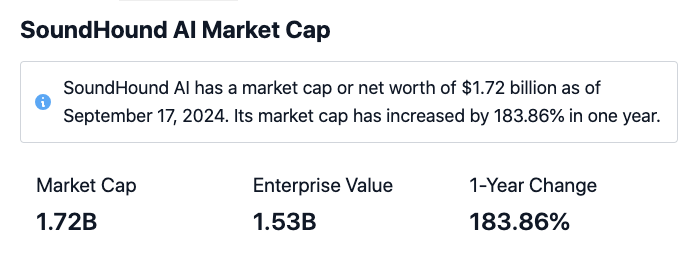The capacity of an AI-based stock market predictor to adjust to market fluctuations is essential, since financial markets are constantly changing and affected by unexpected changes in economic cycles, events and policy changes. Here are ten suggestions to assess how well an algorithm for stock trading is able to adjust these fluctuations.
1. Examine Model Retraining Frequency
Why: A regular retraining will ensure that your model adapts to the most current market data.
How to: Check whether the model has mechanisms to train regularly using up-to-date data. Models that have been trained are more likely to reflect current trends and behavioral changes.
2. The use of adaptive algorithms for determine the effectiveness
The reason is that certain algorithms, like reinforcement learning or online models of learning are able to adapt to changing patterns more efficiently.
How do you determine whether a model has been designed using adaptive algorithms that can handle changing environments. Algorithms like reinforcement learning, Bayesian networks, or the recurrent neural network with adaptive learning rates are well-suited for handling shifting market dynamics.
3. Verify if Regime Detection is included
What’s the reason? Different market conditions, such as bear, bull and high volatility affect asset performance, and require different strategies.
How: To identify the market’s current conditions and alter your strategy, verify if there are any detection mechanisms within the model, for example, hidden Markov or clustering models.
4. Evaluating Sensitivity to Economic Indices
Why economic indicators such as the rate of inflation, interest rates and employment statistics can have a significant impact on stock performance.
What to do: Make sure your model contains important macroeconomic indicators. This will enable it to adapt to market fluctuations and also recognize broader economic shifts.
5. Assess the model’s capability to handle volatile Markets
Why: Models unable to adapt during volatile periods may perform poorly or even result in substantial losses.
How do you review the previous performance during turbulent times (e.g. major recessions, news events). Take into consideration features like volatile targeting or dynamic risk adjustments which could help the model adjust when volatility is high.
6. Verify for Drift Systems for Detection
Why: When certain statistical properties are altered in market data, it could impact the model’s predictions.
How do you confirm if the model monitors for drift and retrains accordingly. The use of drift-detection or changepoint detection can alert models to significant changes.
7. Evaluation of the flexibility of feature Engineering
What’s the reason? When market conditions change, the rigid feature set can be outdated and decrease model accuracy.
What to look for: Search for adaptive features that let the model’s features to adjust based on current signals from the market. The flexibility of a model is enhanced through the dynamic selection of features and regular reevaluation.
8. Test of Model Robustness across Asset Classes
What’s the reason? If the model has been developed only for one particular asset (such as stocks) it may be unable to adapt it to different asset classes that behave differently (such commodities or bonds).
Test your model with different asset classes or sectors. A model which performs well across a variety of asset classes is more likely to be adaptable to changing market conditions.
9. Search for Hybrid or Ensemble Models to ensure flexibility
The reason: Ensemble models, which combine the predictions from multiple algorithms, are able to overcome weak points and adjust to changing conditions better.
How: Determine whether the model uses an ensemble-based approach, such as combining trend-following with mean-reversion. Hybrid models or ensemble models may alter strategies based on the market conditions, thereby increasing the flexibility.
Review the performance of real-world markets during Major Market Events
How do you know? Stress-testing models against actual situations can show the model’s resiliency.
How do you assess historical performance during significant market disruptions. Use transparent data to see how well your model has been adjusted in these periods or if there is any significant performance loss.
By focusing your attention on these tips, it will be easier to assess the AI stock prediction predictor’s capacity to change, which will guarantee its reliability and responsiveness to changing market conditions. This adaptability helps reduce risk, and improves the accuracy of predictions made for different economic scenarios. Check out the recommended ai intelligence stocks tips for blog info including stock technical analysis, stock market how to invest, ai technology stocks, top artificial intelligence stocks, ai trading apps, predict stock price, ai tech stock, best ai stocks to buy now, best ai companies to invest in, publicly traded ai companies and more.

Ten Top Tips For Assessing Tesla Stock Using An Ai Prediction Tool For Stock Trading
Understanding the business process of Tesla, market developments and external influences can affect the company’s performance. Here are 10 top suggestions on how to assess Tesla’s stocks with an AI model.
1. Understand Tesla’s Business Model and Growth Strategy
The reason: Tesla is a market leader in the electric vehicle (EV) and energy services markets.
You can do this by gaining a better understanding of Tesla’s major business segments like the sale of vehicles as well as energy production and storage and software services, among others. Understanding its growth strategy allows the AI model to forecast future revenue as well as market share.
2. Market and Industry Trends
Why Tesla’s performance is greatly influenced by developments in the automotive and renewable energy industries.
What should you do: Ensure that the AI model incorporates relevant industry data, including the rate of adoption of electric vehicles, government regulations, technological advances and so on. Comparing Tesla’s performance against benchmarks in the industry can provide useful insight.
3. Assess the impact of Earnings Reports
The reason: Earnings announcements can lead to large stock price swings, particularly in high-growth businesses such as Tesla.
How to: Monitor Tesla’s earnings calendar and evaluate historical earnings surprises which have affected the stock’s performance. Incorporate the guidance that the company provides into your model to help determine future expectations.
4. Utilize Technical Analysis Indicators
Why: Technical indicators can assist you in tracking the short-term fluctuations in the price of the stock and help you spot patterns.
How do you integrate key technical indicators, such as Bollinger Bands, Relative Strength Index and moving averages into your AI model. They can assist in identifying potential entries and exits for trades.
5. Macroas well as microeconomic aspects to be considered
The reason is that economic conditions like interest rates, inflation, and consumer spending may affect Tesla’s sales as well as its profitability.
How: Make sure the model includes macroeconomic indicators, such as GDP growth and unemployment rates and sector-specific indicators, like automotive sales trends. This context enhances the predictive power of the model.
6. Implement Sentiment Analysis
The sentiment of investors can have a huge influence on the price of Tesla particularly when it comes to volatile industries like automotive and technology.
Make use of sentiment analysis on social media, analyst reports and financial news to gauge the public’s perception of Tesla. These qualitative data can provide background for AI models.
7. Be on the lookout for changes to laws and policies
Why: Tesla is an industry that is highly controlled and any changes in the policy of government can affect the company’s business.
How do you monitor policy developments related to incentives for renewable energy, electric vehicles and environmental regulations. To anticipate the impact that these policies could have on Tesla’s business, make sure that your model takes into account these factors.
8. Perform Backtesting using Historical Data
Why? Backtesting can help assess how an AI model might have performed based on historical price fluctuations or other certain events.
How: To backtest the models’ predictions make use of historical data on Tesla stock. Examine the results of the model to actual results to determine the accuracy and reliability.
9. Examine the real-time execution metrics
Reason: A speedy execution is crucial for capitalizing on price movements of Tesla’s stock.
What should you do: monitor key metrics to ensure execution, such as gaps and fill rates. Examine how the AI algorithm predicts the best trade entry and exit points, including Tesla. Make sure that the execution matches the predictions.
Review risk management and position sizing strategies
The reason: Effective risk management is vital to safeguard capital, especially given Tesla’s volatility.
What should you do: Ensure that the model includes strategies for managing risk and the size of your position in line with Tesla volatility as well as your risk in your portfolio. This will help minimize potential losses and increase the return.
These suggestions will allow you to assess the ability of an AI stock trading prediction system to accurately predict and analyze Tesla’s stock price movements. You should also ensure that it stays relevant and accurate in evolving market conditions. Check out the best helpful resource for microsoft ai stock for blog recommendations including stock investment, ai share price, ai in investing, stocks and trading, ai trading software, ai on stock market, investing in a stock, stock market how to invest, ai in investing, website for stock and more.

Leave a Reply